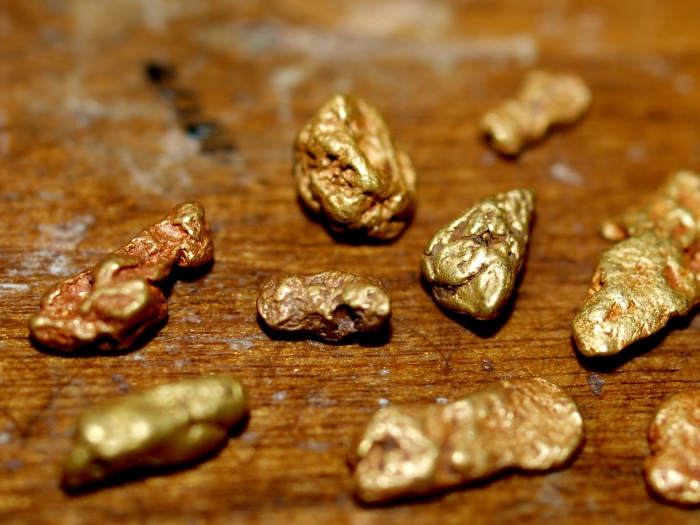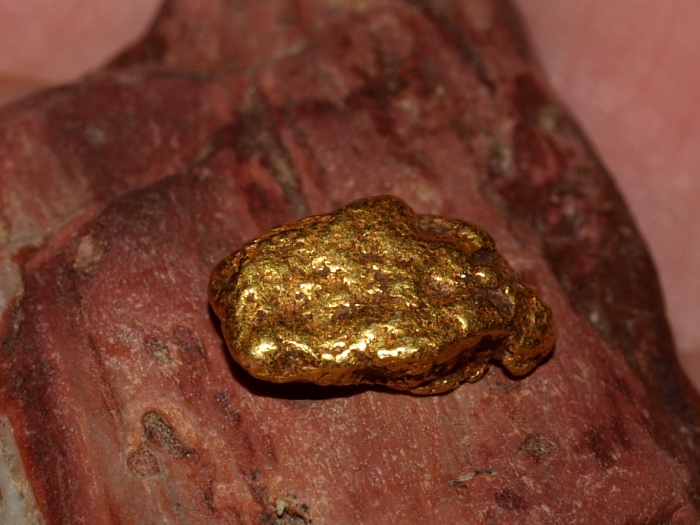
California is known all over the world for its rich mineral history and the plentiful gold rushes that led to its development over the years. It’s no wonder that the Smith River has become a hotbed for gold prospectors. This article outlines the history of gold activity on the pristine emerald waters of this river and the best places for mining activity for the modern miner.
The Smith River proudly holds the title of the only undammed river in California, flowing freely along its entire course. Named for pioneer and frontier explorer Jedidiah Smith, it is a wondrous blend of rugged and serene views.
Del Norte County Gold
The Smith River flows 25 miles from the Klamath Mountain range in northwestern California towards the Pacific Ocean. Its entirety is located within Del Norte County and tracks its way through various national forests and parks like the Six Rivers National Forest and Jedediah Smith Redwoods State Park.
Much of the gold produced within Del Norte County can be attributed to placer activity on the Smith River and its tributaries. The river itself has a Middle, North and South Fork. The Middle Fork is around 60 miles northeast of Crescent City, while the North Fork is on the northeast slope of Chetco Peak in Oregon. Finally, the South Fork rises 30 miles east-northeast of Crescent City, on the eastern edge of the Smith River National Recreation Area.
Rich Tributaries
The first gold discovery was made in Myrtle Creek in 1853, on the heels of the initial gold rush phase in California. The bulk of mining activity on the Smith River and its surrounding areas took place from 1853 well into the 1870s, and the settlements grew as a result.
Notable placer mines were established, like the Hurdy Gurdy, Monkey, Craigs Creeks and the French Hill Area. The town of Smith River shares its name and is located within Del Norte County, near the Oregon Border. Early settlers established it as a result of mineral activity and migration. Today, it is the main settlement of the federally recognized tribe of the Tolowa Dee-ni’ Nation.
The Smith River flows through the Gasquet area, which has two types of gold deposits within—pyritic replacement veins and fissures in pre-Tertiary rocks and placer deposits in Recent gravels. Gold, pyrite, chalcopyrite and occasional galena and quartz can be found as a result of this mineralogy.
The highest yield gold finds are within placers found amongst terrace and stream gravels. The town of Gasquet, which takes its name from the French immigrant who was part of its establishment in the 1850s, swelled with mining supplies, lodging and logistics services for eager prospectors who flocked to the area. However, as the railroads were built by the late 1860s and a lack of water posed a challenge to large-scale mining activity, the industry dried up and began to move elsewhere.

South Fork Smith River
The Smith River area has been mined intermittently, predominantly by hobbyists and individual prospectors rather than large scale companies. The South Fork of the Smith River is a popular spot for gold panning, particularly at the river crossing where the water flow is low.
Coon Creek saw some large-scale dredging operations as well, with gold found in the gravel bars in that area.
Myrtle Creek Trail off Highway 199, where the first discoveries were made, is also another popular zone. As you trek along this relatively easy 2-mile stretch, there are several signs along the trail giving information about the area’s mining history. A major producer of vein gold is in this area, called the Myrtle Creek Mine.
Lastly, you can also pass through the Tolowa Dunes State Park and take one of the trails towards the beach. Commonly known as the Mouth of Smith River Trail, this will lead you to the place where the ocean meets the river waters. Some sands along the beach have fine gold that you can pan out. It takes patience to recover that tiny gold!
The Heyday
The Smith River area’s principal gold mining period was from the 1850s to 1870s, with an estimated total production of 40,000 ounces, and intermittent work has continued since then. There were also other notable minerals found in the area, such as platinum from Craig’s Creek. In fact, when the government shifted focus to the war effort in the 1930s and 40s, chrome ore was mined at the operations in the French Hill Mine.
Experienced and skillful anglers enjoy the huge Chinook salmon within the Smith River’s waters, with the largest recorded specimen as large as 50 pounds. Whether you’re panning for gold, waiting for the fish to bite or simply out for an adventure, the Smith River will surely leave you with valuable memories. After all, the sunlight glinting on the river’s emerald surface is a different kind of treasure entirely.
Still Finding Gold in the Redding Area
21 Rivers in California that area Still Loaded with Gold!










